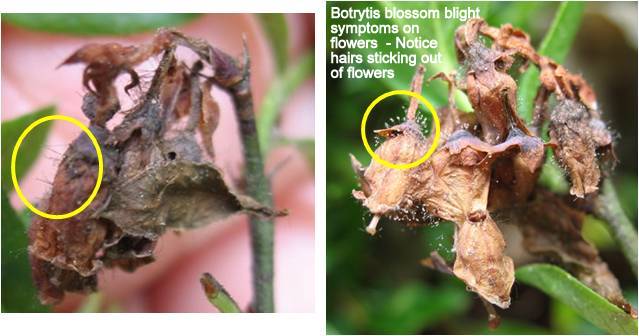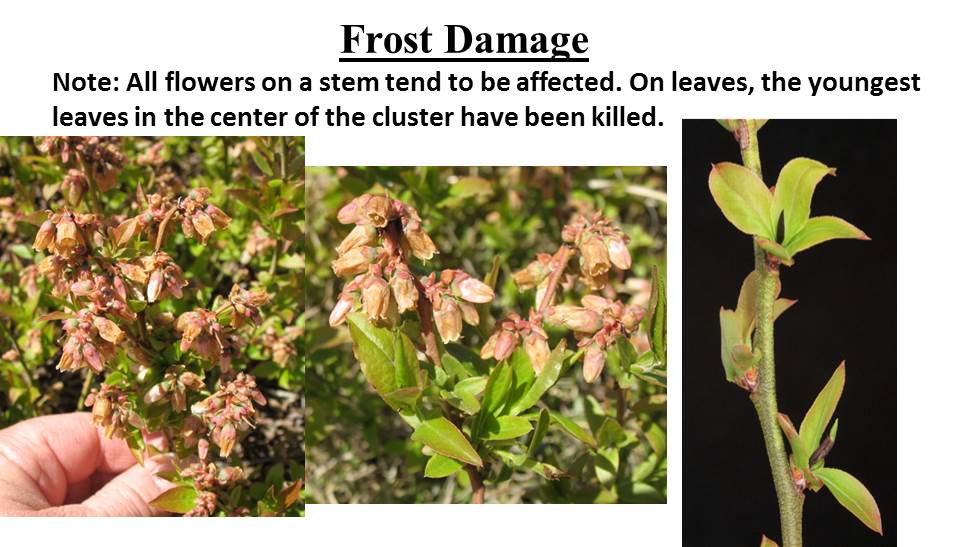5.20.13 Symptoms of Mummy Berry Disease and Others
I think the mummy berry infection season is over for this year. Cups in most areas would have dried up over the last few days, so there won’t be any spores to infect the plants. I don’t think this current wet weather will be causing any infection periods for the mummy berry fungus.
You may start seeing symptoms of Mummy berry disease in your field now and over the next week. It is too late to spray fungicide at this time. Any symptoms you find are from infections that occurred at least 9 to 10 days ago. The spores produced on the dead leaves and flowers will NOT cause new killing infections. These spores will infect healthy flowers and produce mummy berries. The number of mummy berries produced is typically too low to be concerned about trying to control this stage of the disease.
Mummy Berry Symptoms
Symptoms of mummy berry disease are shown in the pictures below. This fungus does attack and kills both flowers and leaves. Flowers are typically killed before they open. The petiole (base of leaf) of leaves give a characteristic shepherd’s crook shape. Powdery gray spores can be seen at the base of the leaves or flowers where they attach to the plant. Unless it is a very susceptible clone, you will only see isolated leaves and flowers with the disease.
Frost
You may also see frost damage in some clones. Frost tends to affect most of the flowers on a stem. You may also see just the green growing tip of the leaf dying off. Please see pictures below.
Botrytis Blossom Blight
If you have had Botrytis blossom blight in your field previously, this is the time of year to scout for it in early blooming clones. The symptoms are dead, open, flowers with black hairs sticking out of them (see picture below). You will probably need a magnifying glass or hand lens to see the hairs. If you do have it in your field, this wet weather over this week may cause infection by this fungus. It is only worthwhile to apply fungicides for Botrytis blossom blight if you are sure you have had this disease in the past and it has affected your yield.

If you have any questions, please email Seanna Annis at sannis@maine.edu or call 207.581.2621.

